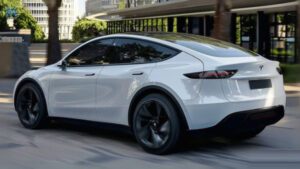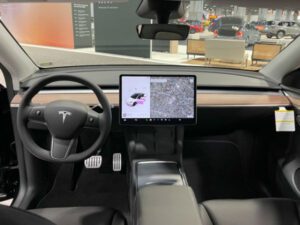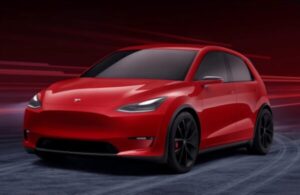2026 Tesla Model Q
The 2026 Tesla Model Q is an upcoming low-cost electric vehicle, an unofficial name given by the media for the company’s first-generation electric vehicle (EV), sometimes referred to as the Tesla Model 2. Tesla has not officially confirmed the name of the Model Q, but financial analysts have used the term, and the project is reportedly on track for a 2026 launch. The low-cost vehicle’s strategy has changed and now includes two separate products, a conventional manual-driven vehicle and a fully autonomous robotaxi.
The Tesla Model Q 2026 base model is likely to be a rear-wheel drive (RWD) vehicle with a 53 kWh Lithium Iron Phosphate (LFP) battery, which is a more affordable and longer-lasting technology. The interior is likely to be more compact than the high-end Tesla, with fewer features. However, it is expected to feature a central touchscreen and still follow the Tesla minivan design philosophy. It is also expected to be able to feature Full Self-Drive (FSD) features as a paid option.
2026 Tesla Model Q : Interior
The interior of the Tesla Model Q, the unofficial name for the upcoming low-cost electric vehicle, is expected to retain Tesla’s signature design aesthetic, centered around a large touchscreen display that controls most of the car’s functions. Despite its low price, Tesla’s design chief noted that the cabin will not feel “cheap” but instead uses clever design elements, ambient lighting, and quality materials such as a mix of fabric and vegan leather to give it a premium feel for the price. The interior is designed to be spacious for its compact footprint, comfortably seating four adults, and will retain key controls such as a steering wheel and pedals, setting it apart from the standalone Cybercab project.
To keep the price affordable, some features found in the premium Tesla Model 3 and Tesla Model Y trims will likely be dropped or simplified in the base Model Q. Possible cost-cutting measures could include manual and power-adjustable seats, a basic seven-speaker audio system without AM/FM radio functionality, and the absence of a second-row passenger screen and heated rear seats. The base model may also drop the full acoustic glass in the rear windows, which could result in slightly more road noise compared to higher-end Teslas. These technical reductions are intended to balance affordability with the core Tesla experience.
2026 Tesla Model Q : Engine
The Tesla Model Q does not use a traditional engine but is powered by electric motors and a high-capacity battery. The base model is expected to use a more cost-effective single-motor rear-wheel drive (RWD) configuration, which focuses on efficiency and a balanced driving experience rather than over-performance. It is expected to use a small, inexpensive Lithium Iron Phosphate (LFP) battery, said to be around 53 kWh, which is robust and sufficient to provide a practical range while keeping the purchase price low. This powertrain design, along with the next-generation platform components, aims to make the vehicle more efficient and less expensive to produce.
A more efficient AWD (All-Wheel Drive) version is also rumored to be added to the Model Q lineup. This variant will offer better traction and faster acceleration compared to the base RWD model. It is likely to feature a larger battery, likely around 75 kWh, to support the increased power demand and range requirements. Both powertrain options are expected to utilize Tesla’s advanced vehicle management and battery technology, ensuring competitive efficiency and performance in the entry-level EV segment.
2026 Tesla Model Q : Safety
The Tesla Model Q does not use a traditional engine but is powered by electric motors, with a primary focus on efficiency and cost reduction. The base model is expected to feature a single rear-wheel drive (RWD) configuration, paired with a low-cost and durable Lithium Iron Phosphate (LFP) battery pack, said to be around 53 kWh. The configuration prioritizes range and urban efficiency to keep the car’s purchase price affordable. There are also rumors that a more efficient all-wheel drive (AWD) version with a dual motor setup and a larger battery is being developed.




